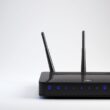A common practice among many individuals is leaving chargers plugged in, even after their devices are fully charged. However, there are several lesser-known risks associated with this habit that demand attention.
Risks Linked to Continuous Charger Connection
1. Continuous Power Drain: Even when not actively charging a device, chargers draw a small amount of electricity due to their internal components. While this standby power usage may seem insignificant, it can accumulate over time, contributing to unnecessary energy waste.
2. Risk of Overheating: Perpetually plugged-in chargers are susceptible to overheating. This prolonged exposure to heat can lead to the degradation of internal components, such as capacitors, ultimately diminishing the lifespan of the charger.
3. Fire Hazard: Although rare, a charger consistently connected to the power source can potentially overheat during sudden voltage surges, resulting in smoking or ignition. This presents a serious fire risk, underscoring the importance of exercising caution.
Concerns for Electrical Safety: Especially in households with young children or pets, leaving chargers plugged in with exposed cords can pose a significant safety hazard. There is a risk of electric shock if the cord is tampered with or chewed on.
Preventive Measures
1. Unplug chargers when not actively charging devices to minimize energy consumption and mitigate the risk of overheating.
2. Regularly inspect chargers for any signs of damage or wear, and replace them if necessary.
3. Ensure chargers and their cords are kept out of reach of children and pets to prevent accidents.
By comprehending these risks and adopting simple preventive measures, you can establish a safer environment in your home while also extending the lifespan of your chargers.



